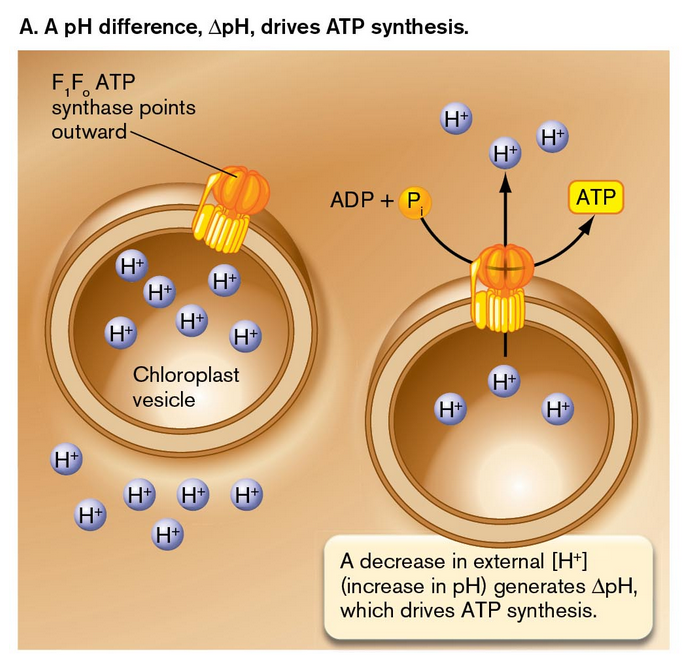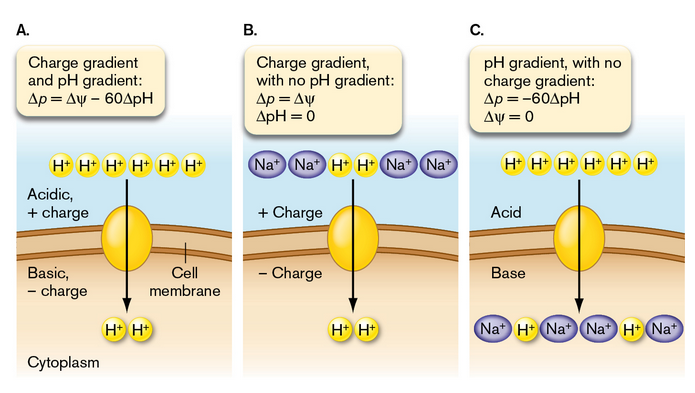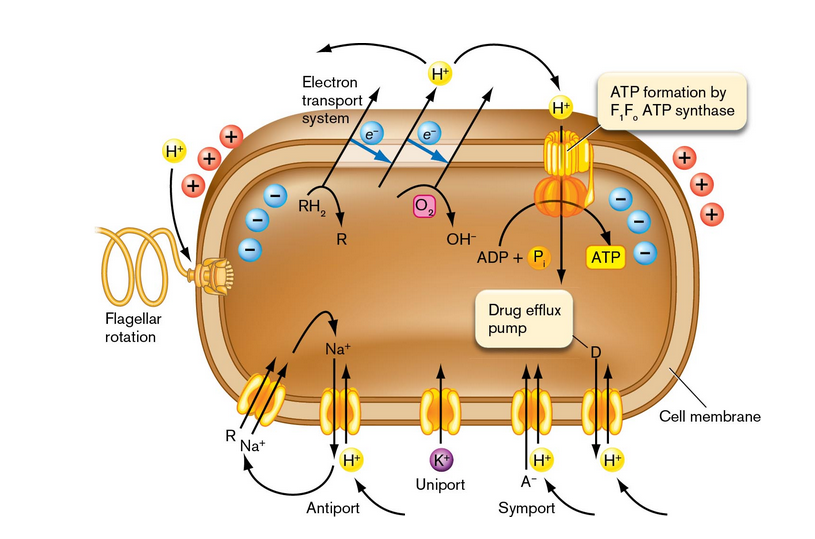Microbiology Chapter 14: Electron Flow
1/17
Earn XP
Description and Tags
Name | Mastery | Learn | Test | Matching | Spaced |
|---|
No study sessions yet.
18 Terms
How does the electron transfer system/chain carry energy?
The ETC carries energy by pumping e- and H+ ions donated by electron carriers through several cytoplasmic membrane pumps which pump them from the cytoplasm into the cytoplasmic membrane, generating an electrochemical gradient
Organotrophy
uses organic electron donors and inorganic/organic terminal electron acceptors (O2, NO3-, C4H4O4)
Lithotrophy
uses inorganic electron donors (Fe2+, H2) an inorganic/organic terminal electron acceptors (CO4, C4H4O4, etc.)
Phototrophy
involves light capture by chlorophyll, usually coupled to splitting of H2S, H2O, or organic molecules
How does the electron transport chain store the energy of the ion gradient?
The ETC stores the energy of the ion gradient through electrical potential (Δψ) or the pH difference (ΔpH), these gradients are the result of pumping electrons and H+ ions

Which forms of energy contribute to the proton motive force?
electrical potential (Δψ) and the pH difference (ΔpH) both contribute to the proton motive force

What cell processes are driven by the proton motive force?
uptake of nutrients
efflux of antibiotics
flagellar movement
synthesis of ATP

Oxidoreductases
receive a pair of e- from an organic (NADH) or inorganic (H2) molecule, coupled with Q to pump 4H+ ions across the membrane
Quinone pool (Q)
mobile electron carrier, coupled with oxidoreductases to pump 4H+ ions across the membrane
Terminal Oxidase
usually contains cytochrome, receives 2 e- from quinol (QH2)
Why would a bacteria use a metal or inorganic terminal electron receptor?
metal/inorganic terminal electron receptors are useful if the organism lives in an environment where oxygen is scarce but other materials are abundant. these receptors enable it to respire even in anaerobic conditions
Anaerobic vs. Aerobic Respiration
Anaerobic respiration uses a wide range of different terminal electron acceptors, aerobic respiration uses O2 as a terminal electron acceptor
How do bacteria benefit from producing alternative oxidoreductases?
doing so allows bacteria to conduct lithotrophy by oxidizing H2 of Fe2+, enabling them to acquire energy from inorganic electron donors
How does oxidation of inorganic minerals (lithotrophy) yield energy?
inorganic minerals are used to provide electrons to the electron transport chain, which can then be accepted by anaerobic acceptors, producing energy
How does methanogenesis affect the environment?
methanogenesis produces methane, which is a greenhouse gas, and its accumulation can contribute to global warming
Chemolithotrophy
uses inorganic electron donors and inorganic/O2 electron acceptors to preform respiration
Helicobacter pylori
Chemoorganotrophy
uses organic electron donors and organic/inorganic/O2 electron acceptors to preform respiration
E. coli
Methanogenesis
the process of reducing CO2 and other single carbon compounds into methane, this process is used by archaea to generate the energy needed for growth